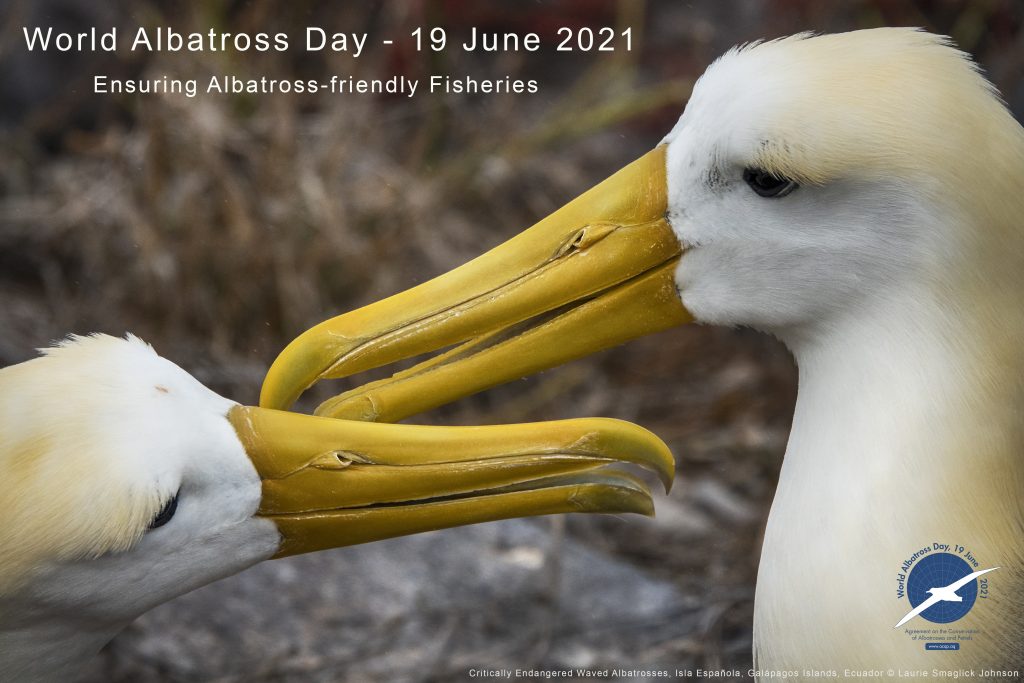By Kate Huyvaert, Special Features Editor, Ornithological Applications
Tomorrow, Saturday, June 19, 2021 marks the second World Albatross Day, a day for celebrating and raising awareness about the ‘conservation crisis’ the world’s albatrosses and petrels are facing (Agreement on the Conservation of Albatrosses and Petrels – WAD2021: “Ensuring Albatross-friendly Fisheries” (acap.aq)). With this year’s theme, Ensuring Albatross-friendly Fisheries, organizers hope to bring awareness to one of the top threats to albatrosses and petrels: bycatch in fisheries.

In a paper published in 2019, Dias, et al. identified the top two threats to seabirds as invasive species and bycatch in fisheries. The impact on albatrosses is immense: Bycatch in longline fisheries accounted for deaths of at least 160,000 albatrosses per year, according to a 2011 study by Anderson and colleagues, and the actual impact may be double this estimate. Continuous and careful study of albatrosses, their movement, and the extent of overlap with fishing activity reveals that bird-fisheries interactions imperil albatrosses and motivates international efforts to raise awareness, like World Albatross Day and calls for global action (Beal et al. 2021) to better implement monitoring and mitigation measures.
The impact that interactions with fisheries poses to albatross populations is undeniable, yet albatrosses face other important threats as Phillips and colleagues outline in their review. Albatrosses ingest plastics incidentally when foraging. The severe toll of plastic ingestion was initially thought to be limited to Laysan albatrosses in the Hawaiian islands as reported by Sievert and Sileo. But new work by Roman and colleagues suggests that plastic ingestion is an important cause of mortality for Southern Ocean albatrosses, too.
Uhart and colleagues remind us, too, that diseases like avian cholera (caused by a bacteria) pose a threat to some of the most imperiled albatross populations. Albatrosses are not immune to the effects of viruses, either. Vanderwerf and Young documented negative effects of disease caused by avian pox virus in juvenile Laysan Albatrosses and avian pox was responsible for a small outbreak and mortality in one of this year’s focal species for World Albatross Day, the Waved Albatross, as noted by Tompkins and colleagues.
Finally, despite their far flung colonies and ocean-wandering habits, albatrosses are also at risk from the effects of invasive species like rats, cats, and mice who can injure or kill albatross chicks and adults. Even the largest of albatrosses, the Wandering Albatross, suffers from predation by feral cats, as detailed by Barbraud and colleagues.
While the news about albatrosses seems grim—they face threats to population persistence both at sea and on land—this year’s World Albatross Day offers an opportunity to appreciate and celebrate these fascinating sentinels of the seas.
